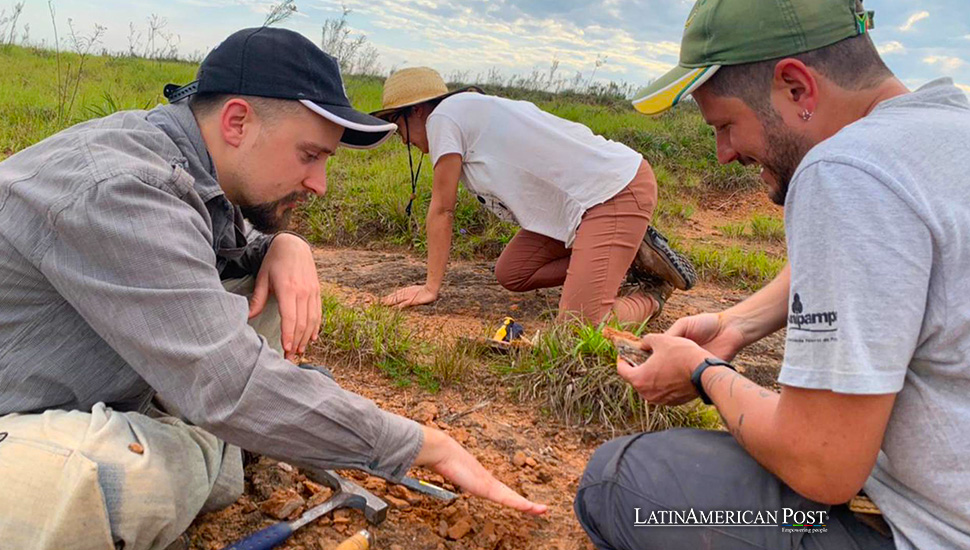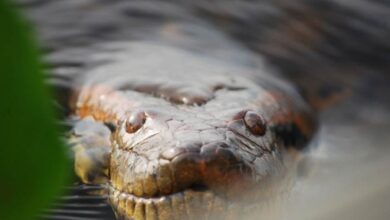Ancient Amphibian Fossil Discovered in Brazil Sheds Light on Pre-Dinosaur Era

A groundbreaking discovery in southern Brazil reveals the fossil of ‘Kwatisuchus Rosai’, an ancient giant amphibian predating dinosaurs, previously known only from Russia, offering new insights into the planet’s prehistoric life.
Ancient Amphibian Unearthed in Brazil
In a remarkable discovery that sheds new light on Earth’s prehistoric era, scientists have unearthed fossils of an ancient giant amphibian in southern Brazil, a species previously known only from Russia. This find, made by the University Federal do Pampa (UniPampa), introduces ‘Kwatisuchus rosai’ to the world, a name derived from the Tupi term ‘kwati’ meaning long snout, and ‘rosai,’ in honor of Professor Átila Stock Da-Rosa, a pioneer in paleontological discoveries in the region.
‘Kwatisuchus rosai’ belongs to the group of temnospondyls. These carnivorous creatures thrived in aquatic ecosystems, mainly in Russia, about 250 million years ago during the Triassic period. The discovery of this approximately 1.5-meter-long species in Brazil is particularly significant as it represents the first of its kind in the country.
Extending Knowledge of Temnospondyls
Temnospondyls, which could grow up to five meters, were abundant in the Triassic aquatic ecosystems. The discovery of ‘Kwatisuchus rosai’ in Brazil extends our understanding of their geographical distribution, indicating that these creatures were more widespread.
The complete skull of this prehistoric amphibian was found on a farm in the rural area of Rosário do Sul, in the interior of Rio Grande do Sul state. The fossil, dating back approximately 250 million years, was discovered in August 2022. It underwent a meticulous cleaning and preparation process before it could be studied in detail, leading to the official naming of the new species.
Researchers at the Paleobiology Laboratory of the São Gabriel Campus of UniPampa have noted that ‘Kwatisuchus rosai’ was a “survivor” of an environment devastated by the largest mass extinction in the planet’s history. This extinction event, which marked the end of the Permian period and the beginning of the Triassic, saw the disappearance of a significant portion of Earth’s plant and animal species.
Insights into Environmental Adaptation
Felipe Pinheiro, the paleontologist who led the research, pointed out that temnospondyls were adapted to conditions of high environmental stress, which might explain their abundance worldwide following the mass extinction event. This adaptation to extreme conditions makes the discovery of ‘Kwatisuchus rosai’ all the more intriguing, as it offers insights into how some species managed to thrive after such a catastrophic event.
Pinheiro further noted that studying these ancient amphibians helps us understand how extinctions have impacted the planet and how we can recognize their effects today. In this regard, the discovery of ‘Kwatisuchus rosai’ is not just a window into the past but also a tool for understanding current environmental challenges and the resilience of life in the face of adversity.
Brazil’s Paleontological Heritage
The discovery of ‘Kwatisuchus rosai’ in Brazil is a testament to the country’s rich paleontological heritage and the importance of ongoing research in uncovering the mysteries of prehistoric life. It underscores the significance of interdisciplinary collaboration in paleontology, combining fieldwork, laboratory analysis, and historical research to piece together the history of life on Earth.
The finding of this ancient giant amphibian in Brazil, far from its previously known habitat in Russia, also highlights the dynamic nature of prehistoric ecosystems and the ever-changing geographical distribution of species over millions of years. It prompts reevaluating existing theories about the distribution and evolution of ancient life forms, particularly those that survived mass extinction events.
Also read: Mexican Scientists Launch AI App for Real-Time Epidemic Surveillance
Significance in Paleontological Research
The discovery of ‘Kwatisuchus rosai’ in southern Brazil is a significant milestone in paleontological research, providing valuable insights into the Triassic period’s ecosystems and the resilience of life. It enriches our understanding of the planet’s biological history and reminds us of the enduring legacy of Earth’s ancient inhabitants. As research continues, each new discovery like this brings us closer to unraveling the complex tapestry of life that has existed on our planet for billions of years.





